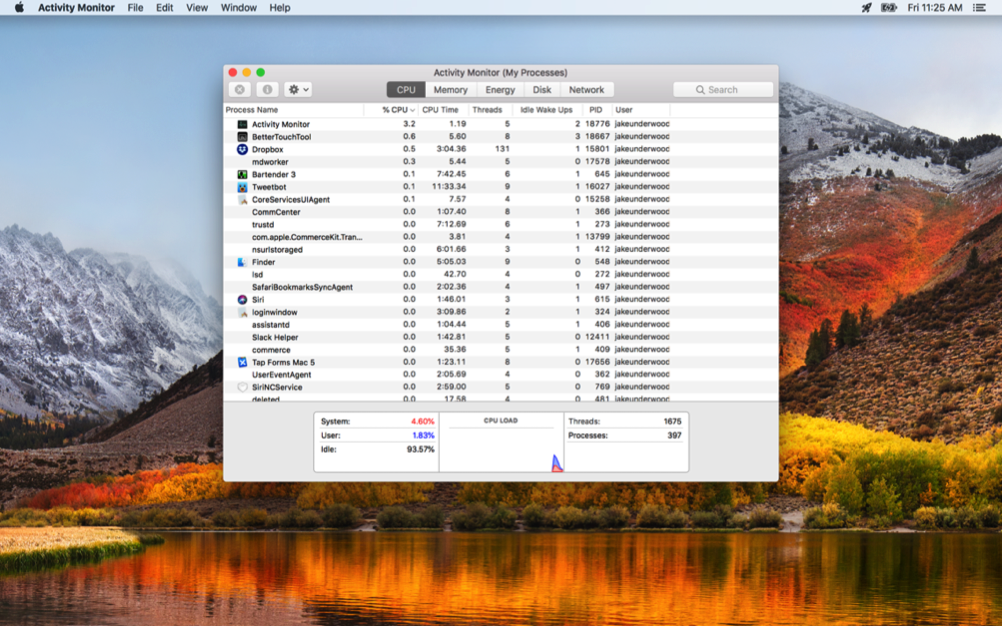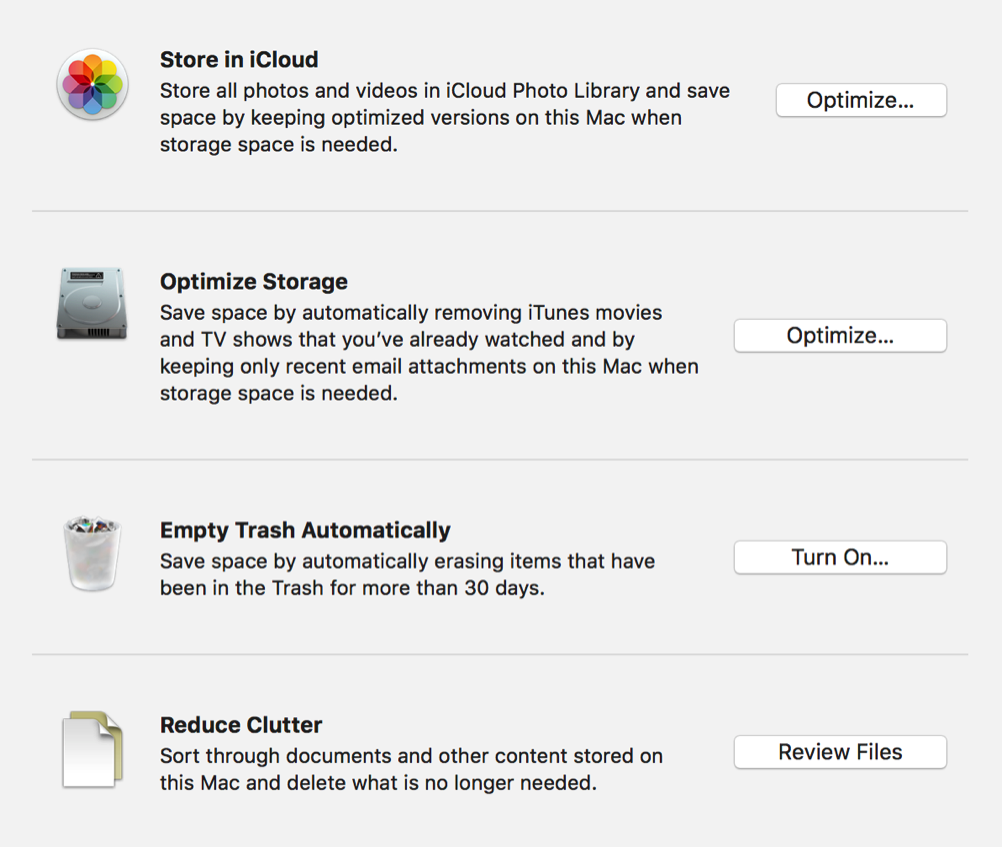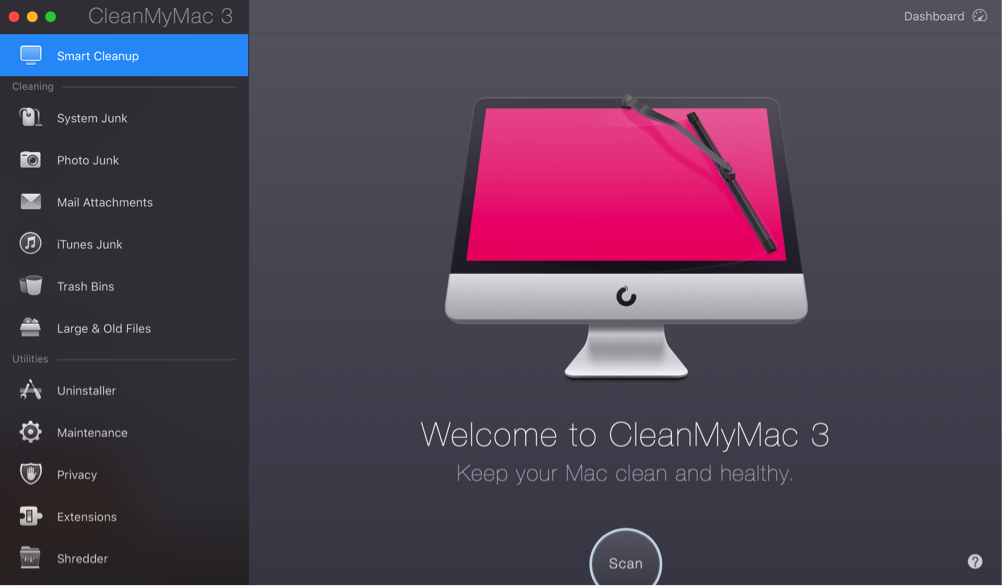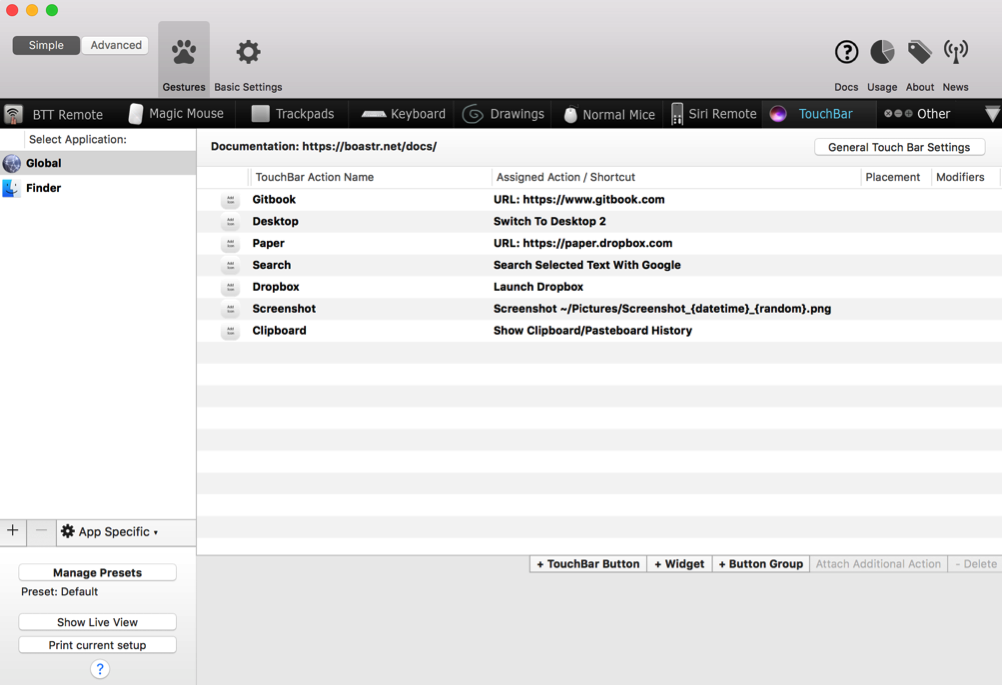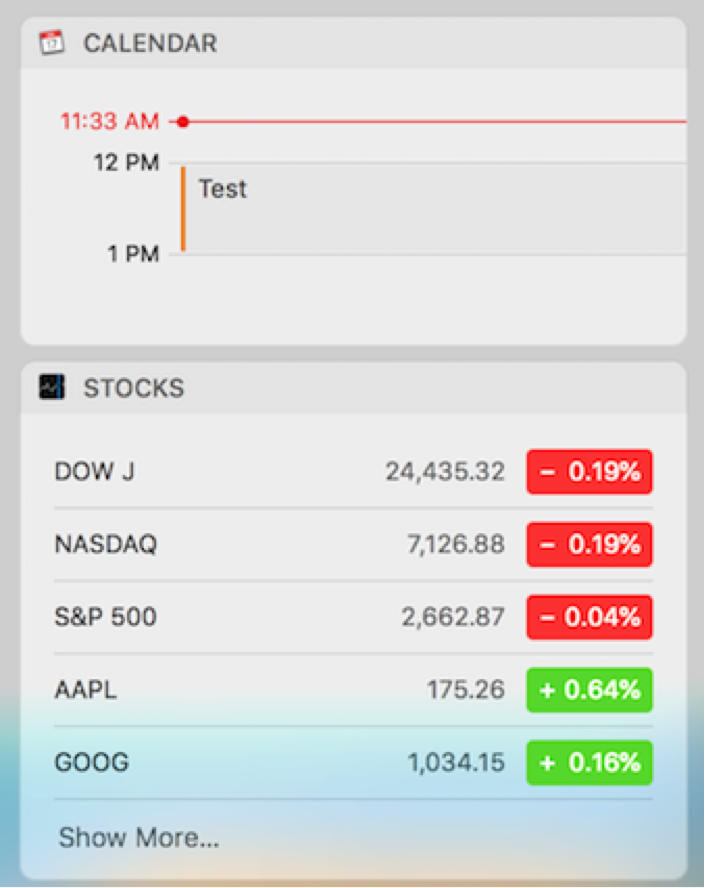99 Ways to Increase Speed and Productivity on Your Mac
Whether your Mac is running slow or you’re just looking to optimize your system, there are always tips that can help your Mac’s performance and keep you productive. To assist you in your search for the best options to speed up your beloved Mac desktop or notebook, here are 99 tips and tricks to get the job done.
Cleaning Up Your Mac
- Identify apps using unnecessary resources with Activity Monitor.

- When you’re done using apps, quit them by right clicking their dock icon and selecting “Quit”.
- Resource-heavy browsers can slow down your Mac. The built-in browser, Safari, is fully capable and can do much of what Chrome can do.
- Though browser extensions can help your workflow, they can also bog down your browsing speed. Remove unnecessary options if possible.
- Tabs are an incredibly useful tool in the browser, but the more tabs added, the slower it can become. When you’re done with tabs, close them.
- If you’re confident that you have files you’ll never need again, delete them.
- Newer updates may bring speed and performance improvements to your Mac, so update your version of macOS when available.
- Remove items you don’t use in iTunes, like movies, apps, and podcasts. This will, in many cases, remove large files from your disk.
- Like iTunes, Mail can carry some large attachments. When you have emails you no longer use, move them to the trash.
- As you’ve probably gathered by now, anything that takes up disk space is only further dragging down your speed. Have apps you no longer use? Delete them.
- For the apps you do use, constantly clean up their documents to declutter your disk.
- The desktop is one of the most convenient locations to place files, but too many files can cause slowness because of the graphical power needed to display the thumbnails. Try sorting these documents into folders, deleting them, or moving them off the desktop.
- If your browser feels slow, it may be time to clear your history and cache.
- Spotlight is a search tool built in to your Mac to make it easier to find your files. Because your files are changing and updating, it may occasionally index your files. To see if it’s doing this, type CMD + Space and look for the indexing progress bar. If so, your Mac may be slightly slower, but will return to normal.
- When you boot up your Mac for the first time or after an update, it may be indexing your photos in the Photos app. After the process ends, your Mac should speed right back up.
- A cache is a temporary file stored on your Mac that helps speed up the things you do most. Sometimes, these caches can take up a lot of space, so the best option is to clear them.
- When you’re ready to do a deep clean of your Mac, CleanMyMac is perfect for the job. It’ll identify unimportant and unused files and help you delete what’s unnecessary.

- If you have ample iCloud space, you can store images from Photos in the cloud by visiting the About this Mac menu, clicking “Storage” and then “Manage…”
- The “Optimize Storage” option in the same location can remove iTunes movies, TV shows, and Mail attachments automatically.
- If you feel comfortable letting macOS handle this, it can also empty your trash automatically via the aforementioned menu…
- …and while you’re there, you can also sign off to let macOS remove files you no longer use.
- While we’d like to think that malware isn’t present on Macs, it can certainly be a problem. For ridding your device of bad actors, we recommend Malwarebytes.
- A once-useful utility, Dashboard doesn’t have much functionality anymore. Removing it can further declutter your Mac.
- Not a fan of widgets? CleanMyMac can remove them for you.

- If too many apps are clogging your toolbar, use Bartender to clean it up.
- Onyx can help declutter your Mac and speed up its processes by revealing hidden features.
- Over the course of time, you’ll likely accrue dozens of files in downloads. Cleaning those out can remove large attachments from your disk.
- The dock is a convenient place to keep your most-used apps, but removing any that you don’t use can save system resources.
- Though it’s nice to have a screensaver, it also requires the system to call on those files. Without a screensaver, the power can go elsewhere.
- Large files can take up valuable space on your disk and can cause slowness. If you can delete them or transfer them to a cloud service, you’ll get space and speed back.
- Font Book is a great tool for those who need lots of different fonts on their computer, but removing some can also reduce your overall file count.
- If not much seems to be working, reinstalling a new copy of macOS can add a fresher feel to your Mac.
Changing Settings
- At startup, your Mac will launch certain programs. Whittling this down will speed up the boot process.
- Many windows in macOS feature aspects of transparency. Though visually appealing, these can be intensive on your Mac; to turn them off, visit System Preferences > Accessibility > Display and check the box labeled “Reduce Transparency”.
- Animations can also take a toll on your Mac’s speed. Changing minimizing effects (System Preferences > Dock > Minimize windows using) and motion (System Preferences > Accessibility > Display > Reduce motion) can make a big difference.
pred
- Encryption is important to keeping your devices safe. However, if you feel confident in your security, you can disable FileVault encryption to speed up startup.
- Launch to a specific folder in Finder by changing the setting in Finder preferences under “New Finder windows show”.
- On older Mac operating systems, repairing disk permissions may help certain pieces of software run more effectively.
- Navigating quickly is a big part of how fast you can work on your Mac. By visiting System Preferences and choosing either Mouse or Trackpad, you can bump up the speed of your cursor.
- Adjusting graphics performance in certain MacBook Pros can cause your Mac to feel faster.
Apps, Websites, and Third-Party Tools
- If you’re desperate for faster Internet speeds, you can try switching to Cloudfare to see if it makes a noticeable difference.
- Some websites can be tough on your CPU, especially ones that run lots of ads. To prevent this, you can add an ad-blocker extension like the ones you see here.
- Make sure your Mac is backed up in case of a necessary restore. Services like Dropbox and Backblaze can offer this functionality.
- With macros in Keyboard Maestro, you can automate certain tasks and speed up your workflows.
- BetterTouchTool allows you to customize gestures, keyboard shortcuts, Touch Bar buttons, and more to make you a productivity wizard.

- TextExpander saves you valuable time by turning keyboard snippets into large or difficult-to-type text options.
- Hazel keeps track of folders and automatically organizes them for you, so you’ll always know what’s where.
- After you take certain actions (plug in an iOS device, accidentally open an iTunes link), iTunes can launch and completely interrupt your workflow, causing a big performance hit. With Overkill enabled, iTunes won’t open without your permission.
- Like Keychain Access, 1Password can save passwords – and other sensitive materials – for secure and convenient access later on.
- Alfred combines Spotlight offerings with its own unique features to make you more productive.
- Don’t waste time scouring the web for new Mac apps. Instead, use Setapp
- If you’re insistent on the fastest browsing experience, the consensus is still Chrome
- When two windows just aren’t enough, fire up Magnet to get working with more.
- Waking your Mac from sleep over and over can slow down your work. Amphetamine is a simple tool that prevents your Mac from sleeping, going to screensaver, and more.
- Typically, there’s no need to have duplicate versions of a file. To quickly find and remove duplicates, use Gemini.
- Mac users who are fans of emoji and gifs can use Rocket to access these tools with simple keystrokes.
- When you uninstall apps, they can often leave behind additional files that, over time, weigh down your Mac. To rid your device of every last app file, we recommend Trashme.
- Dropbox for Mac provides immediate access to your cloud files via Finder.
macOS Features
- “About this Mac” is a great tool to learn more about your Mac, including understanding what’s taking up processes and how much memory you have.
- Keyboard shortcuts are one of the best ways to simplify functions on your Mac. Get to know them in Apple’s support documentation.
- Some newer MacBook Pros have been outfitted with the Touch Bar, which offers quick shortcuts to features in your favorite apps.
- In System Preferences > Trackpad, you can find a variety of gestures that can speed up your interactions with macOS.
- Have an Apple Watch? You can unlock your Mac with it by just being near.
- Touch Bar MacBook Pros also have a Touch ID sensor, which can cut the login process considerably.
- When you feel like you have limited space on your desktop, create another one to move windows elsewhere.

- Two app are better than one – and can make you more productive. For this, use Split View.
- Siri brings a lot to the table on the Mac. It can access files quickly, answer questions, and more.
- When you need to find an app or file in an instant, type CMD + Space to access Spotlight
- Though Dropbox and Backblaze work well for backups, Apple’s own tool, Time Machine, is perhaps the best option to back up and restore in the event of failure.
- Saving passwords with Keychain Access will autofill the appropriate fields when logging into websites, saving you time.
- By default, macOS will auto-join familiar Wi-Fi networks – so make sure this feature is enabled!
- If you’re the more technical type, AppleScript is a built-in tool that can help you automate actions in macOS.
- MacOS’s Notification Center is just a swipe or click away from showing you notifications and providing quick access to important data.

- Disk Utility can provide a much-needed view at your disk, allowing you to delete or repair your drives in hopes of a speed boost.
- In the browser, choosing a homepage can make all the difference when you frequent a particular site.
- Using Safari? Consider using the favorites view for access to your most-viewed sites.
- Instead of searching for sites you’ve visited before, bookmarks can save them for later.
- Though you’re probably familiar with the share sheet on iOS, its Mac version can be just as helpful to send files, links, and more in a snap.
- If you can’t find your cursor, wiggle your mouse or finger on the trackpad – it’ll appear in a larger form on-screen.
- MacOS features rich gesture support, and getting familiar with them can bump your productivity.
- Third-party apps are nice, but many core computing functions can be handled by Apple’s first-party offerings, like Keynote, Pages, Preview, and iMovie.
- Tags offer an extra level of convenience when trying to quickly find folders and files on your Mac.
- When you’re switching from one Mac to the next, you can use Migration Assistant to save time and energy – and keep all your data.
- If the hassle of installing Rocket is too much, macOS has a built-in emoji picker. You can summon it with CMD + CTRL + Space.
- Also in Notification Center are widgets, which provide small-scale versions of some apps you love.
- Mac devices with the Force Touch trackpad can utilize a Force click to see more information about a word or phrase.
- When switching between iOS and macOS devices, you can use Handoff to pick back up where you were on the other devices.
- Don’t go back and copy the same thing again – use Universal Clipboard to paste the last thing you copied on any of your devices.
Hardware
- The System Management Controller oversees many of your Mac’s functions. Resetting it can resolve a lot of problems.
- The same goes for PRAM—with a proper reset, your Mac may resume proper functionality and speed.
- Before you take a deep look into the system’s slowness, a simple restart might be able to do the trick.
- Many older Macs have the ability to be upgraded with additional RAM, which can better handle your daily processes.
- If your Mac has a HDD, upgrading to a SSD will give your device a considerable speed boost.
- Typically, wired connections via Ethernet lead to faster Internet speeds than Wi-Fi. If Internet-focused processes feel slow, plug in to Ethernet.
- Of course, your Internet could simply be slowing you down. With a proper speed test, you can see if that’s causing the problem.
- But if your Internet is always the source of your slowness, it may be time to upgrade to a faster speed.
- Whether it’s internal or external, a bigger hard drive can give you the extra space you need.
- External hard drives are great for backups, but they also work for moving big files off your Mac to save some room.
- Still can’t seem to speed up your Mac? It may be time to buy a new one. Sell your used Apple products to com (SYM), the world’s most trusted and highest independently rated Apple trade-in company.
Tags: apple
